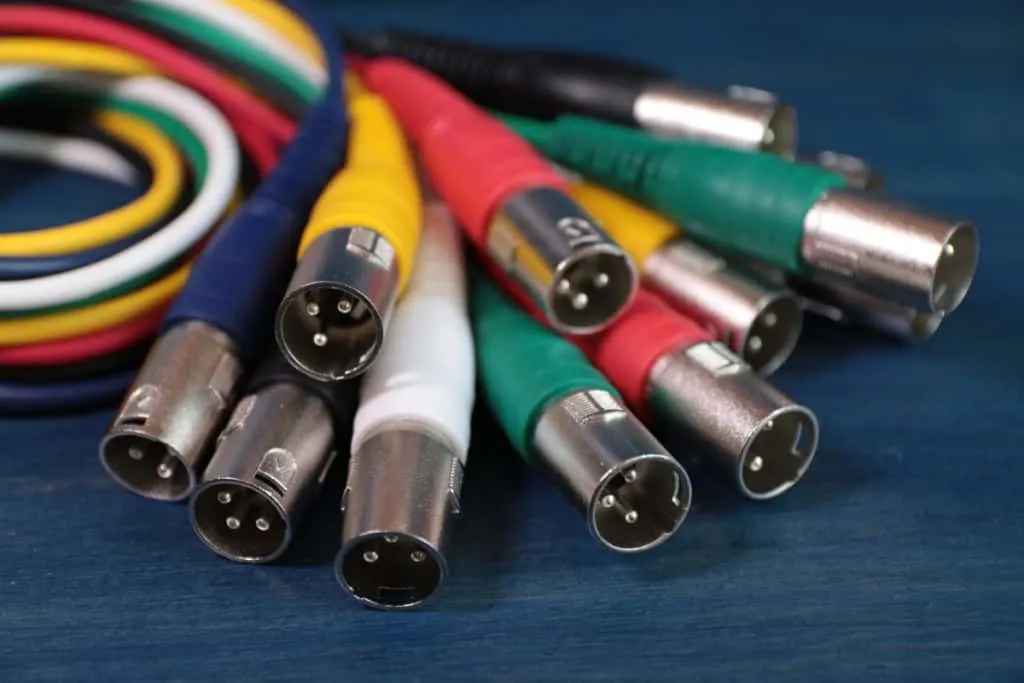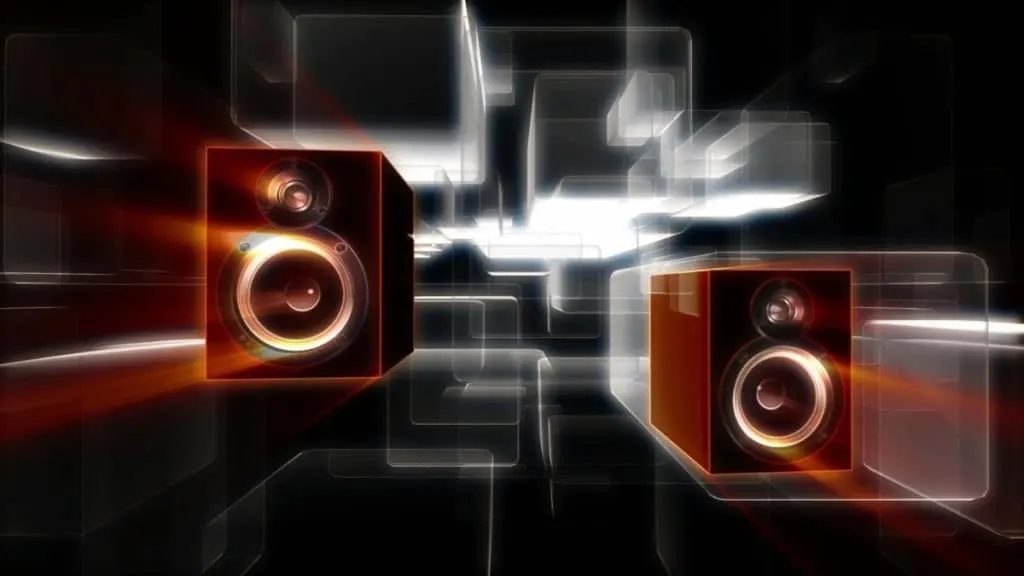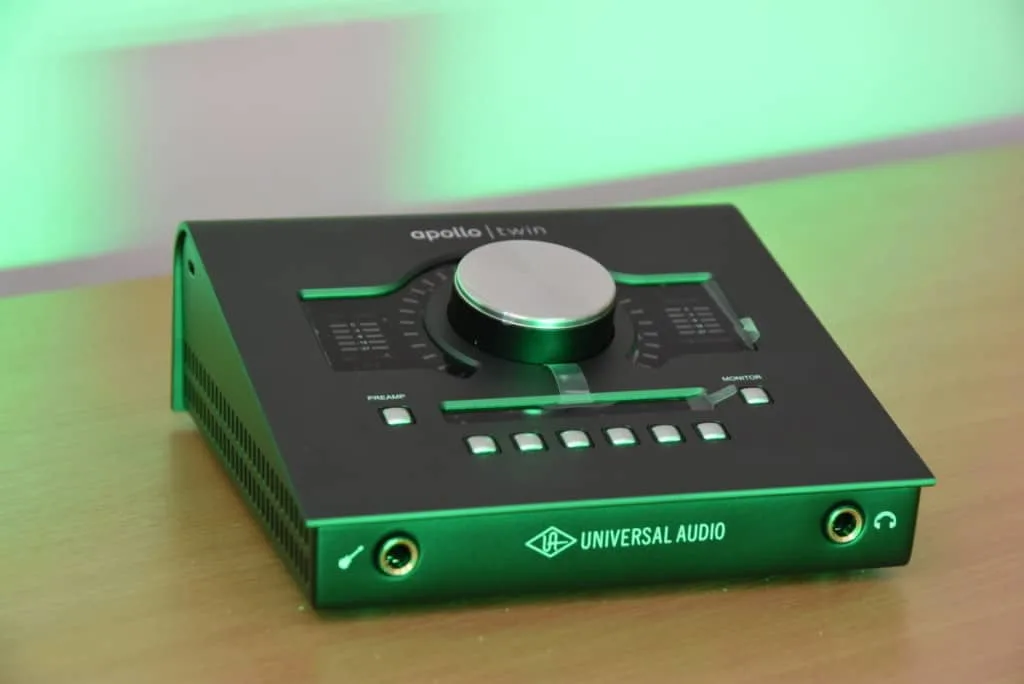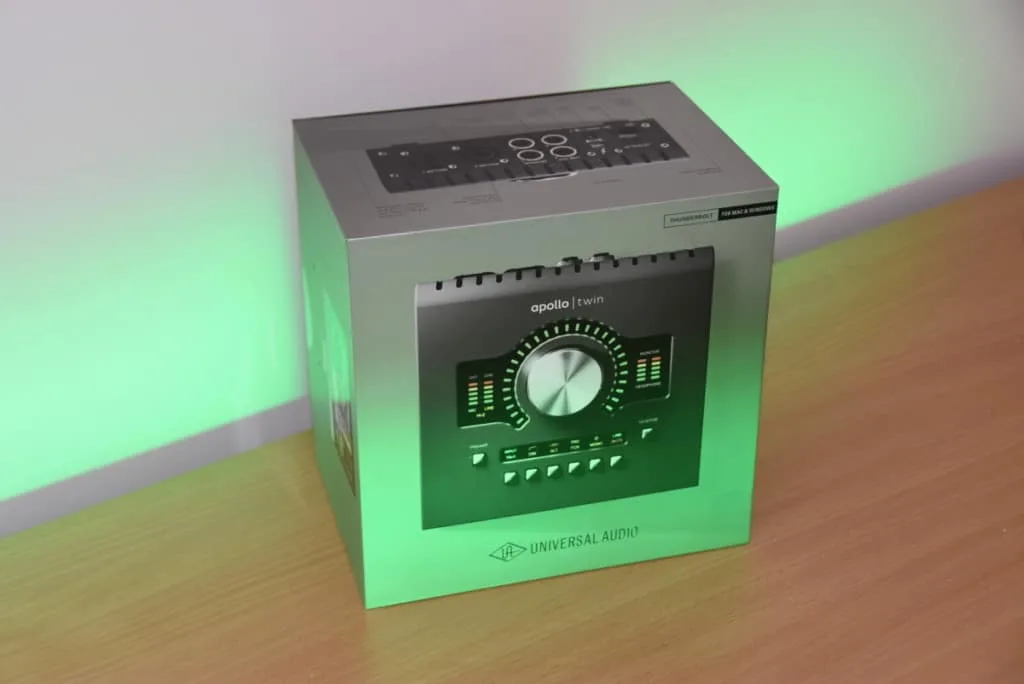If you have been at least once to a music venue you know what microphone cables are.
They mostly connect microphones to mixers but their real name is XLR and is a type of connection widely used in audio for many different things; even lights on big stages use them.
Have you ever wondered or heard of using microphone cables on speakers? Is it a good idea? I’ve been on enough stages these last thirty years to answer that for you.
So, microphone cables for speakers, is it a good idea?
You can use microphone cables for speakers and create what you would call a noiseless, balanced connection between the audio source and the speaker. The speaker you connect through an XLR connector has to be active (powered) or small enough for a regular cable to be able to handle the voltage of the amplified signal.
Traditional speaker cables are very resistant to the voltage coming from power amps and going to speakers but susceptible to noises. XLR connections, on the other hand, can help you “clean up” the signal but can’t handle too much voltage, hence work much better with active speakers to which you only have to provide an audio signal.
That was the short answer but the story goes a long way. Read on and find out everything about balanced connections with XLR cables on speakers.

Anatomy Of An XLR Connection
To understand the anatomy of an XLR connection we have to go back all the way to the 1950s.
You might have heard people calling XLR connections “cannon” connections. This is because the inventor of them was named James H. Cannon.
Although the most common one is a three-pin version, there can be up to 9 pins in the same cable structure. Also, in pieces of gear like wireless microphones or monitoring systems you can easily find a connector called mini XLR which is the mini version of the standard XLR cable.
With time, many companies took on Mr. Cannon’s design and developed it until the shape we have today, seventy-five years later. Perhaps the two companies worth mentioning, in this case, are Switchcraft and Neutrik.
This last one, for example, created the needed pieces to remove internal screws that might loosen up with time and then fall off.
XLR connections have two parts: a male connector and a female connector. They are today the most widely used connection in the professional audio world by far.
In fact, an XLR connection is a synonym of good audio quality, and, to be honest, most of us relax when we see an XLR connection in which to plug our stuff when we get somewhere to work. XLR connections are also compatible with phantom power, which is something that most condenser microphones in the world need, and hence, most studios feature long mixing consoles with endless XLR connectors on them.
You can check out my article on phantom power here
Balanced Vs Unbalanced Cables
I mention this first because this is XLR’s strongest point. What we know as “balanced audio” means being the closest to lossless audio possible when covering long distances.
Let’s break down the connector a little, these are the three pins:
· Ground – This part of the cable is the pin in charge of grounding the load and it is usually slightly longer, touching the female connector before any other part. This means that the connection is secured and balanced at all times.
· Positive or “hot” & negative “cold” – These remaining two legs of the connector carry the same signal with opposite polarity. The external noise that can be picked up along the way will add to this current. When they reach their destination the receiving end will flip one of the polarities. This small action puts the noise out of phase and hence eliminates it.
Having a noise-free signal can seem irrelevant when all you’ve done is plugged your pedals into the amp and the instrument to the pedals with cables up to 20ft.
Think of a stage in a festival in which cables have to go 100 meters from the stage to the mixing console. Well, this is one of the main reasons why XLR balanced connections are the favorites of all sound engineers in the world.
Here’s a video that explains balanced and unbalanced cables.
Microphone Cable Sound Isolation
Besides the three-pin noise cancellation, XLR cables are great at isolating noise using a longer ground pin and a shielded ground cable.
Since it is also shielded, the isolation of sound is almost impeccable and complete. For an environment like a recording studio, having lossless audio is a definite must.
Imagine that investing thousands of dollars in equipment just to plug it in with less-than-adequate connections to save some bucks is not the best choice. Also, with so many pieces of digital equipment and computers around sound sources, there is a lot of white noise to isolate your instruments from.
Why Use Microphone Cables With Speakers?
As time went by and microphone cables proved to be impeccable at keeping noise-free audio in long distances speakers manufacturers began wondering if is it a good idea to use them for their enclosures.
The answer ended up being a definite yes. Besides the aforementioned capability of eliminating noise, the connectors that utilize XLR inputs usually handle active power like the monitors of a studio or the PA of modern-day stages.
Back when I started playing live, we would have these rack-mounted power amps located behind the curtains that will feed the speakers sitting on the stage.
These rackmounts would weight a ton, had to be cooled and needed to wire up to the speakers. It usually had its own power supply with a backup ready for it in case it went off (because it would take with it all the fun, no sound would come out of the stage).
Actually, there was a rack for stage PA and another one for monitoring that would feed the speakers facing us.
In the last couple of decades since active line array was invented the whole world of live audio changed. Now you have speakers hanging from the ceiling that are active, self-sufficient pieces of equipment blasting up to three times the power in less than a third of the space. The same goes for woofers, active and hidden under the stage to make all the insides of the audience realigned by the end of the show.
Advantages Of Using Microphone Cables For Speakers
The advantages of using XLR connections on speakers active are:
· Noiseless performance – Since the entire connection is balanced, there are absolutely no dangers of picking up noise even if it is a long-distance to cover.
· No power amp needed – There is no need for power amps because active speakers have a built-in power amp section that allows them to work detached from external power sources. This means a lot when one of them blows out and you can continue to use the rest while you fix or replace it. When the power blew on the rack-mounted power amps there was very little could be done but running it with a generator or having a backup for each.
You can read more about power amps and active speakers here
· Industry-standard – As time proves pioneers right, XLR speaker connections are becoming more popular than ever, and hence, more equipment is coming with an XLR jack in the back (female connector). Back in the day, finding an XLR-compatible enclosure was nothing short of an odyssey.

Disadvantages Of Microphone Cables For Speakers
Not everything is good news about plugging speakers with XLR, let’s take a look:
· Active speakers need two cables – This was always the first complaint that I heard from sound people in the world when line array took the market by storm. As they are active speakers they need to be fed with electricity as well as sound. This became an issue because all the stages and venues were usually routed for one cable to the speakers. Many venues had to be reformed to fit them.
· Incompatibility – Not every piece of gear is compatible with XLR outputs. For example, if you own a Fast Track from M-Audio which is a very famous audio interface, you won’t have on the back XLR outputs. Other, more modern pieces of gear like the Universal Audio Apollo Twin trust balanced TRS 1/4” cables to hook up the studio monitors to it.
Check out the reviews of the incredible Apollo Twin here on Amazon
There are many other more modern connectors on the market including SpeakOn. You can read more about it in an article I have written here

How To Connect Speakers With A Microphone Cable
Now that we’ve seen how important microphone cables are to the overall sound quality coming out of the speakers I imagine you agree with me in the answer to the question if is it a good idea to use them there.
With all the information we’ve been through, it’s time to address a controversial matter:
Can You Use Regular XLR Microphone Cables For High-Demanding Speakers?
Well, the answer to that question is yes.
The only reason why nowadays you can use this kind of cables on speakers is that they produce power inside. Regular XLR microphone cables can take the 48 volts of the phantom power and can be lossless for long distances but are not suitable to take high voltage like you need for an amplified signal to go to a speaker; in most cases, they will literally melt.
The anatomy of speaker cables and a regular XLR cables are very different.
· Regular speaker cable – This is very much what you can find in any power cable which is an unshielded two-conductor vessel. The width of it is considerably higher, so the more power it has to handle. It is impossible to wire a two-conductor unshielded cable into a three-pin connector; hence this kind of cable is incompatible with XLR connectors.
· XLR audio cable – This cable features two conductors and an external shield which makes it compatible with the XLR connector but unable to withstand the amount of voltage needed to run a speaker cabinet at a big stage.
So, the equation becomes simpler than ever because you can never go wrong.
Speakers that can be connected through an XLR connection are those which are powered, active, which can generate their own volume. The rest of the speaker connections are made using traditional plug-style cables that can handle the amplified power coming from the console. This works for head to speaker connections and also regular, old-school powered mixers to passive speakers.
Different Speakers & Case Scenarios
As for what I said above, there is an important difference I want to make regarding microphone cables.
These cables can effortlessly run noise-free frequencies for long distances. Also, when purchasing good connectors from a brand such as Neutrik, for example, you usually have a connector that will last you for many years but how can we tell which speakers will be compatible and if is it a good idea for our current rig?

Let’s take a look at some of the case scenarios that we might encounter:
Wiring Small PA Systems (bars, pubs, intimate venues)
Although, as stated above, the world of pro audio is turning towards active speakers there are venues and situations in which this won’t be the most comfortable.
Furthermore, if you are a professional PA engineer you know that in small places where the mixing console and the PA are very close from each other passive speakers might even be more convenient if you have a powered mixer.
Acts like singer-songwriters, acoustic bands, stand-up artists, live poetry events and such do not need state of the art three-way speakers with subwoofers to sound their best.
In this case, perhaps clearing the stage from connections and just plugging the powered mixer and running balanced TRS cables to the speakers is the best option. In fact, in such a scenario, the investment into going for XLR connections and active speakers might not be economically viable either.
Wiring Big PA Systems
Anything from big venues to stadiums works on XLR with active speakers.
Being able to plug each speaker in a line array to its own power source and being able to just replace it on the spot for another one without having a meaningful effect on the overall sound or stopping the show is paramount for industry professionals.
As you might have noticed if you have been researching and doing numbers, these modern PA systems are more expensive and less abundant than traditional ones. In fact, you might start seeing many powered mixers and rackmount power amps for sale cheaply a lot lately because many people are already making the change.
I would say that big PA systems are where the XLR cables work the best in ease of use and sound quality.
XLR Or TRS For Studio Monitors?
Many audio interfaces, mixers, and studio gear don’t have any XLR connection available.
A good example is Universal Audio´s Apollo Twin, which sits right there among the best in its category.
So, you might have some amazing-sounding, good-looking Rokit 7 on your desk but can’t plug them in through an XLR cable; rather you have to use a TRS plug input.
Wait, do you know what “TRS” stands for? I got news for you: XLR and TRS are equivalents.
The acronym stands for Tip-Ring-Sleeve. This means that the cable has all three connectors that an XLR has just that divided between the tip, the ring, and the sleeve of the plug anatomy rather than three separate pins.
Do TRS balanced cables carry noiseless signal? Yes, they do, so it doesn’t make that much of a difference whether it is a balanced TRS or XLR as long as it is balanced.
Hazards Of The TRS Plug Connection Using Microphone Cables For Speakers
There is one con for balanced TRS connections that is not present in XLR connections.
As I stated above, the ground pin for an XLR cable is slightly longer than the rest and is the first one making contact before any of the others. This is to ground the connection before letting the signal go through.
The key difference here is that a TRS balanced plug has the ground in the sleeve, which is the last part going in and so you are risking part of your equipment because in the case that you plug it in and from the moment tip and ring touch the connector until the sleeve does anything happens, you don’t have the ground to take care of it.
Other Speaker Connections Options Available
We have already spoken about microphone cables being used for speakers and if really is it a good idea to make the change in which scenario. Which are other connectors for speakers you should know about?
· Speakon connectors – Speakon cables are fairly new to the audio world and are primarily used for going from audio sources with an amplified signal to a speaker cabinet. A good example of a growing culture of Speakon connectors is bass cabinets that prefer this over the plug. One great aspect of Speakon connectors is that they twist and lock avoiding any kind of accidents.
I have written a separate article on Speakon connections. You can read it here.
· Five-pin XLR5 – This type of XLR has 5 pins instead of 3 and is very widely used in digital lighting control at big venues. The lights mixer (a console just like the audio mixer) connects to each apparatus using these kinds of cables.
Here’s a great video that shows how to convert XLR to Speakon.
Final Words – Sources Matter
Besides microphone cables, there are a lot of factors that can affect the sound before reaching the speakers.
If you are having problems with your overall sound quality, I thoroughly recommend you check the sources first and then the cables. Sometimes where you plug your audio devices, the closeness to high-tech apparatus, and the condition of the electrical installation in the place all play a major role too.
To the question is it a good idea to use XLR cables for speakers my final answer is “yes when possible”. Is it worth it to change the entire diagram and gear of a venue to install XLR connections and active speakers to improve the sound? I would tackle other issues first and eventually update the system.
For those of you who work at a studio; you’ll notice a big difference going from unbalanced signals (RCA for example) to balanced signals (XLR or TRS) whenever you decide to make the change.
Happy (noise-free) recording!
